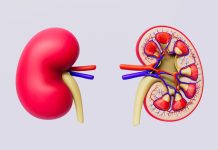
In a new study from the University of Iowa, researchers found that type 2 diabetes remains the most common type of diabetes diagnosed in American adults who have the disease.
The research shows that 8.5% of American adults have been diagnosed with type 2 diabetes and .5% with type 1 diabetes.
In addition, among those who are diagnosed with diabetes, 91.2% have type 2 diabetes and 5.6% have type 1 diabetes.
Previous survey studies have reported the rate of diabetes in the United States, but the rates by diabetes subtypes — type 1, type 2, or other types — were virtually unknown.
Type 1 diabetes is an auto-immune disease that typically develops in childhood.
Patients with type 1 diabetes also have problems in producing insulin, and therefore they require insulin treatment for survival.
Type 2 diabetes mostly develops in adulthood, and it is caused by a complex interplay between genetic and environmental factors such as obesity, an unhealthy diet, and physical inactivity.
Type 2 diabetes can be treated with lifestyle change, medication, and/or insulin.
In the study, the team used data from the CDC’s National Health Interview Survey (NHIS), which is conducted annually by survey-takers who visit peoples’ homes and ask them about their health.
In 2016, survey takers started to ask respondents who had been diagnosed with diabetes if they had type 1, type 2, or other types.
This survey is the first and only national health survey that attempts to determine how many adults have each type of diabetes.
The researchers believe the result is important because it allows health care professionals and policymakers to better allocate resources to treat each type of the disease.
It provides a benchmark for future surveys to better determine the prevalence of type 1 diabetes and type 2 diabetes in adults.
The team emphasizes the need to continue monitoring the dynamic changes of these two types of diabetes in the American population.
The study is published in the British Medical Journal.
Copyright © 2018 Knowridge Science Report. All rights reserved.
Source: BMJ.



